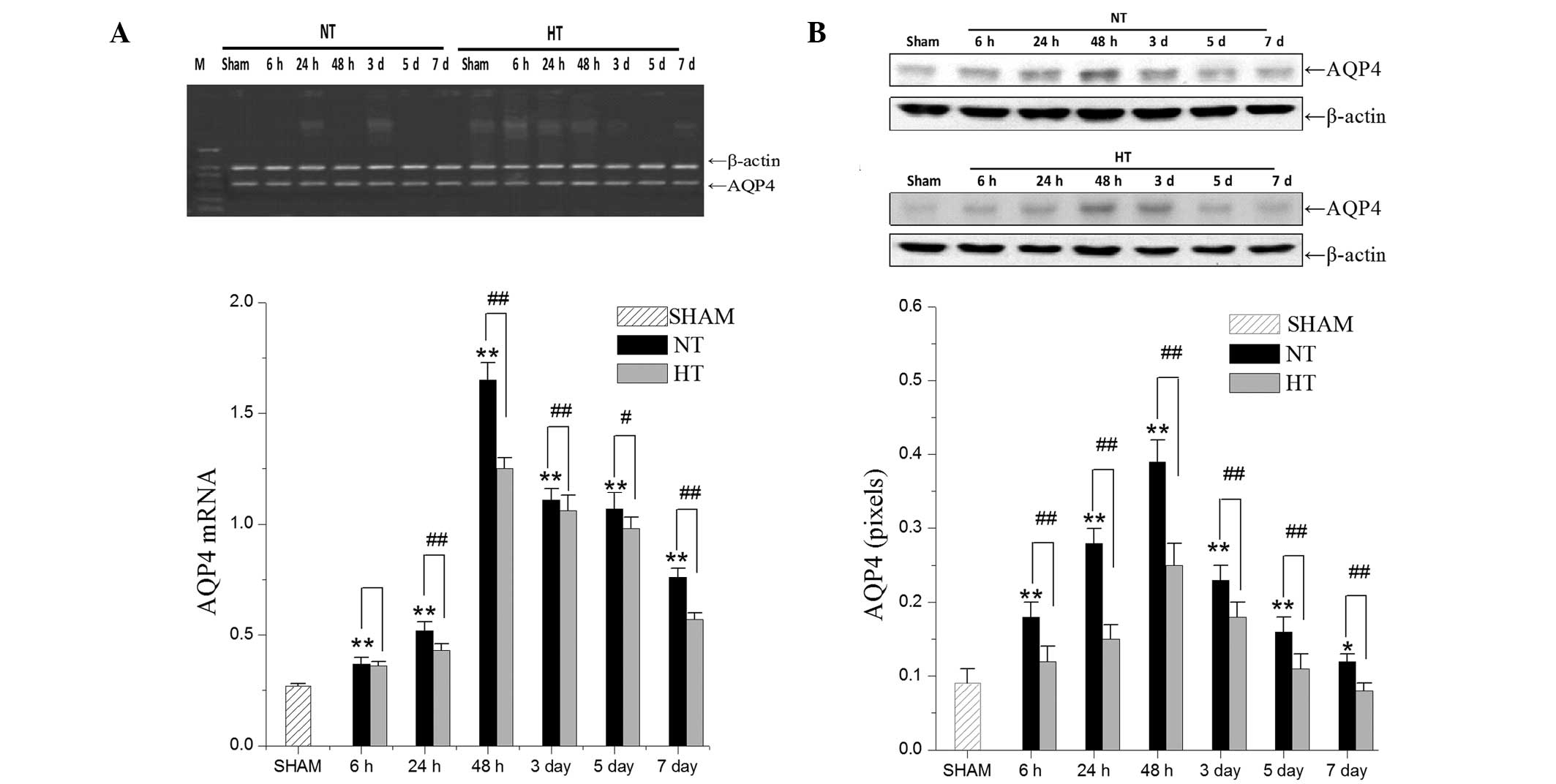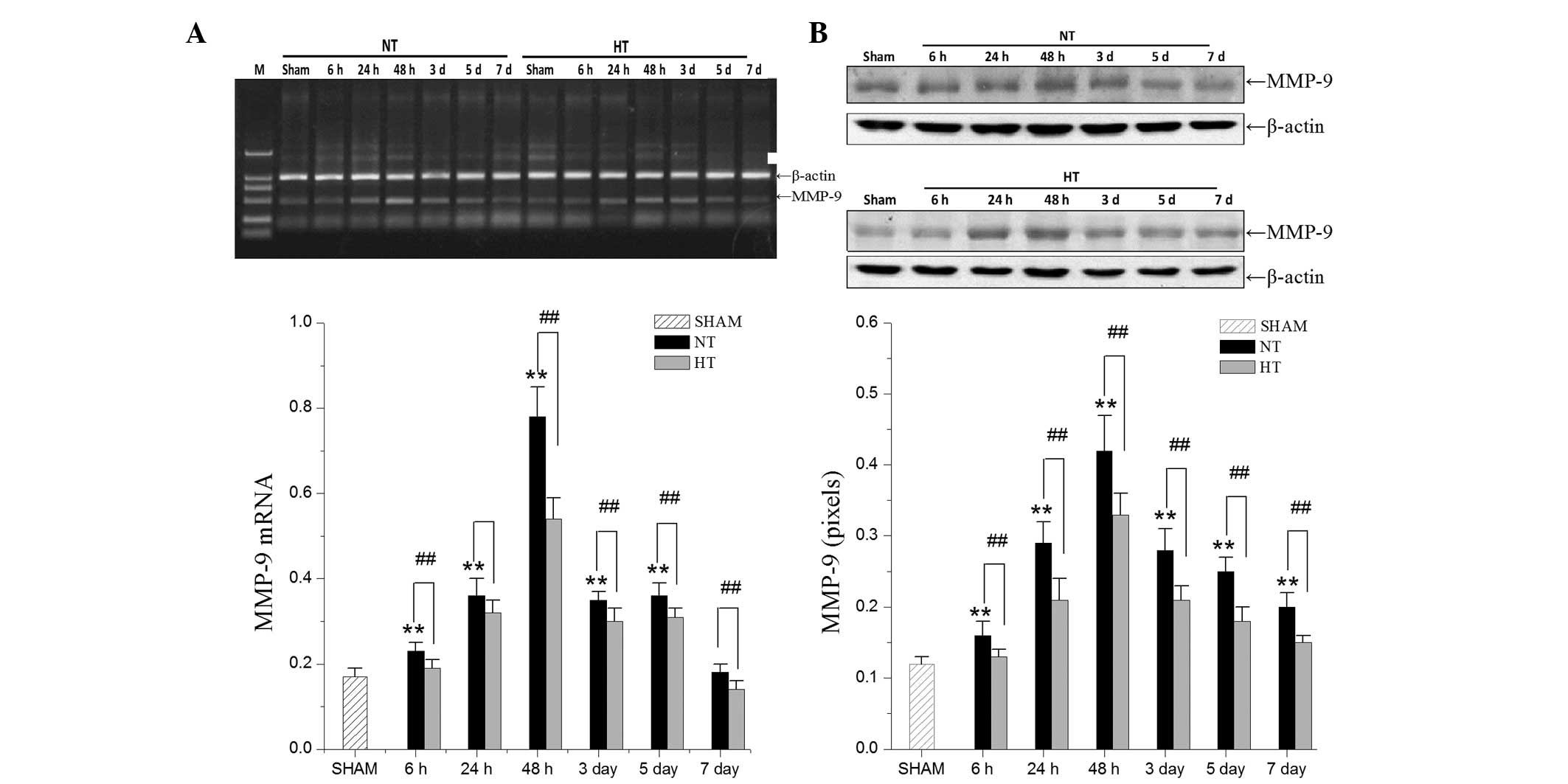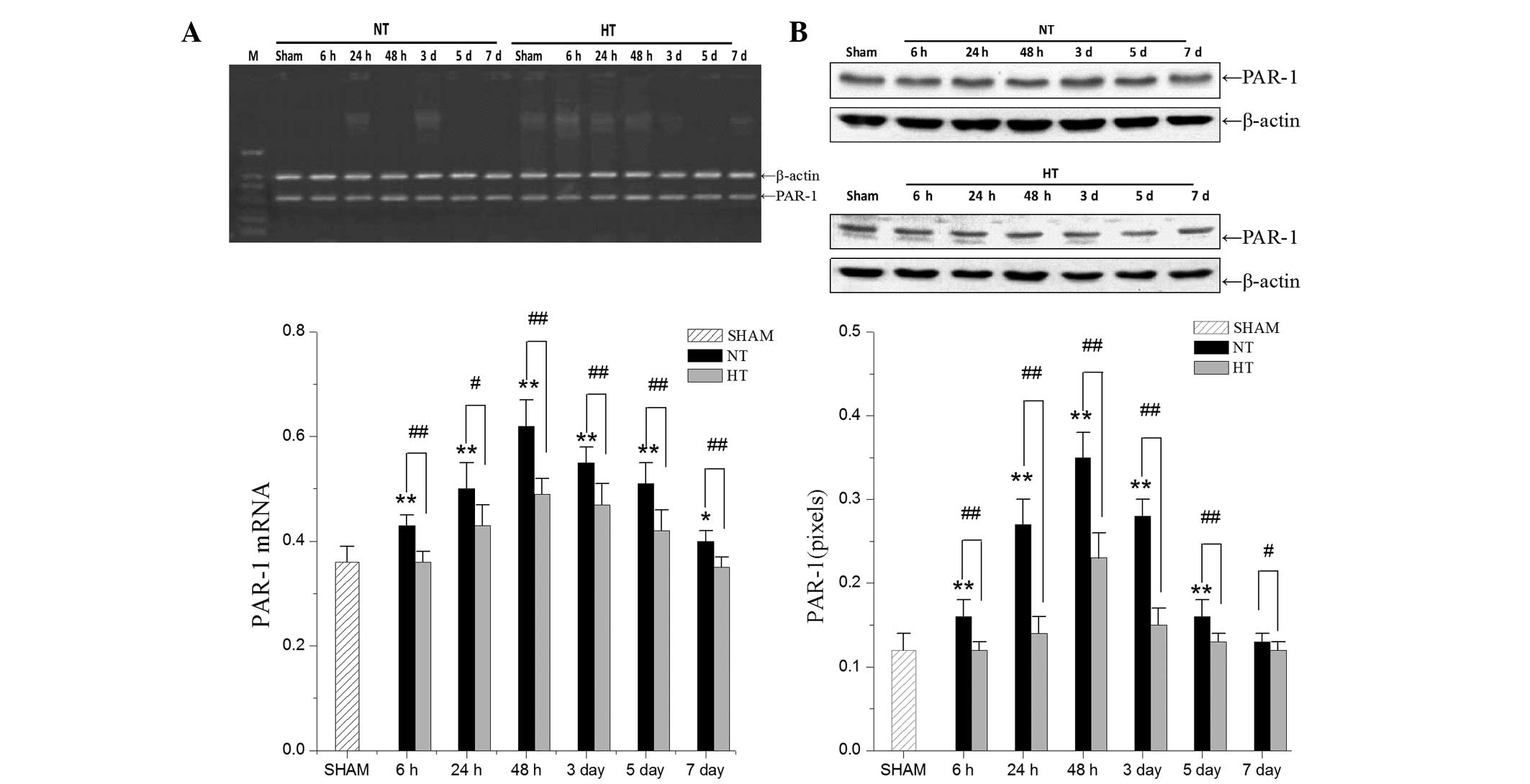|
1
|
Sacco S, Marini C, Toni D, Olivieri L and
Carolei A: Incidence and 10-year survival of intracerebral
hemorrhage in a population-based registry. Stroke. 40:394–399.
2009. View Article : Google Scholar
|
|
2
|
Lee KR, Colon GP, Betz AL, Keep RF, Kim S
and Hoff JT: Edema from intracerebral hemorrhage: the role of
thrombin. J Neurosurg. 84:91–96. 1996. View Article : Google Scholar : PubMed/NCBI
|
|
3
|
Xi G, Keep RF and Hoff JT: Erythrocytes
and delayed brain edema formation following intracerebral
hemorrhage in rats. J Neurosurg. 89:991–996. 1998. View Article : Google Scholar : PubMed/NCBI
|
|
4
|
Arand AG and Sawaya R: Intraoperative
chemical hemostasis in neurosurgery. Neurosurgery. 18:223–233.
1986. View Article : Google Scholar : PubMed/NCBI
|
|
5
|
Noorbakhsh F, Vergnolle N, Hollenberg MD
and Power C: Proteinase-activated receptors in the nervous system.
Nat Rev Neurosci. 4:981–990. 2003. View
Article : Google Scholar : PubMed/NCBI
|
|
6
|
Xue M, Hollenberg MD, Demchuk A and Yong
VW: Relative importance of proteinase-activated receptor-1 versus
matrix metalloproteinases in intracerebral hemorrhage-mediated
neurotoxicity in mice. Stroke. 40:2199–2204. 2009. View Article : Google Scholar : PubMed/NCBI
|
|
7
|
Rosenberg GA: Matrix metalloproteinases in
neuroinflammation. Glia. 39:279–291. 2002. View Article : Google Scholar : PubMed/NCBI
|
|
8
|
Zador Z, Stiver S, Wang V and Manley GT:
Role of aquaporin-4 in cerebral edema and stroke. Handb Exp
Pharmacol. 190:159–170. 2009. View Article : Google Scholar
|
|
9
|
Dietrich WD, Atkins CM and Bramlett HM:
Protection in animal models of brain and spinal cord injury with
mild to moderate hypothermia. J Neurotrauma. 26:301–312. 2009.
View Article : Google Scholar : PubMed/NCBI
|
|
10
|
MacLellan CL, Clark DL, Silasi G and
Colbourne F: Use of prolonged hypothermia to treat ischemic and
hemorrhagic stroke. J Neurotrauma. 26:313–323. 2009. View Article : Google Scholar : PubMed/NCBI
|
|
11
|
Kawai N, Kawanishi M, Okauchi M and Nagao
S: Effects of hypothermia on thrombin-induced brain edema
formation. Brain Res. 895:50–58. 2001. View Article : Google Scholar : PubMed/NCBI
|
|
12
|
Kawanishi M, Kawai N, Nakamura T, Luo C,
Tamiya T and Nagao S: Effect of delayed mild brain hypothermia on
edema formation after intracerebral hemorrhage in rats. J Stroke
Cerebrovasc Dis. 17:187–195. 2008. View Article : Google Scholar : PubMed/NCBI
|
|
13
|
Busto R, Globus MY, Dietrich WD, et al:
Effect of mild hypothermia on ischemia-induced release of
neurotransmitters and free fatty acids in rat brain. Stroke.
20:904–910. 1989. View Article : Google Scholar : PubMed/NCBI
|
|
14
|
Globus MY, Alonso O, Dietrich WD, Busto R
and Ginsberg MD: Glutamate release and free radical production
following brain injury: effects of posttraumatic hypothermia. J
Neurochem. 65:1704–1711. 1995. View Article : Google Scholar : PubMed/NCBI
|
|
15
|
Fingas M, Clark DL and Colbourne F: The
effects of selective brain hypothermia on intracerebral hemorrhage
in rats. Exp Neurol. 208:277–284. 2007. View Article : Google Scholar : PubMed/NCBI
|
|
16
|
Zhao JK, Guan FL, Duan SR, et al: Effect
of focal mild hypothermia on expression of MMP-9, TIMP-1, Tau-1 and
β-APP in rats with cerebral ischaemia/reperfusion injury. Brain
Inj. 27:1190–1198. 2013. View Article : Google Scholar
|
|
17
|
Wu H, Zhang Z, Li Y, et al: Time course of
upregulation of inflammatory mediators in the hemorrhagic brain in
rats: correlation with brain edema. Neurochem Int. 57:248–253.
2010. View Article : Google Scholar : PubMed/NCBI
|
|
18
|
Arican N, Kaya M, Kalayci R, Kucuk M,
Cimen V and Elmas I: Effects of acute cold exposure on blood-brain
barrier permeability in acute and chronic hyperglycemic rats.
Forensic Sci Int. 125:137–141. 2002. View Article : Google Scholar : PubMed/NCBI
|
|
19
|
Song EC, Chu K, Jeong SW, et al:
Hyperglycemia exacerbates brain edema and perihematomal cell death
after intracerebral hemorrhage. Stroke. 34:2215–2220. 2003.
View Article : Google Scholar : PubMed/NCBI
|
|
20
|
Jiang J, Yu M and Zhu C: Effect of
long-term mild hypothermia therapy in patients with severe
traumatic brain injury: 1-year follow-up review of 87 cases. J
Neurosurg. 93:546–549. 2000. View Article : Google Scholar : PubMed/NCBI
|
|
21
|
Kollmar R, Staykov D, Dörfler A,
Schellinger PD, Schwab S and Bardutzky J: Hypothermia reduces
perihemorrhagic edema after intracerebral hemorrhage. Stroke.
41:1684–1689. 2010. View Article : Google Scholar : PubMed/NCBI
|
|
22
|
Xue M, Fan Y, Liu S, Zygun DA, Demchuk A
and Yong VW: Contributions of multiple proteases to neurotoxicity
in a mouse model of intracerebral haemorrhage. Brain. 132:26–36.
2009. View Article : Google Scholar
|
|
23
|
Xi G, Keep RF and Hoff JT: Mechanisms of
brain injury after intracerebral haemorrhage. Lancet Neurol.
5:53–63. 2006. View Article : Google Scholar
|
|
24
|
Valable S, Montaner J, Bellail A, et al:
VEGF-induced BBB permeability is associated with an MMP-9 activity
increase in cerebral ischemia: both effects decreased by Ang-1. J
Cereb Blood Flow Metab. 25:1491–1504. 2005. View Article : Google Scholar : PubMed/NCBI
|
|
25
|
Mun-Bryce S, Wilkerson A, Pacheco B, et
al: Depressed cortical excitability and elevated matrix
metalloproteinases in remote brain regions following intracerebral
hemorrhage. Brain Res. 1026:227–234. 2004. View Article : Google Scholar : PubMed/NCBI
|
|
26
|
Wang J and Tsirka SE: Neuroprotection by
inhibition of matrix metalloproteinases in a mouse model of
intracerebral haemorrhage. Brain. 128:1622–1633. 2005. View Article : Google Scholar : PubMed/NCBI
|
|
27
|
Heo JH, Lucero J, Abumiya T, Koziol JA,
Copeland BR and del Zoppo GJ: Matrix metalloproteinases increase
very early during experimental focal cerebral ischemia. J Cereb
Blood Flow Metab. 19:624–633. 1999. View Article : Google Scholar : PubMed/NCBI
|
|
28
|
Qing WG, Dong YQ, Ping TQ, et al: Brain
edema after intracerebral hemorrhage in rats: the role of iron
overload and aquaporin 4: Laboratory investigation. J Neurosurg.
110:462–468. 2009. View Article : Google Scholar
|
|
29
|
Tang Y, Cai D and Chen Y: Thrombin
inhibits aquaporin 4 expression through protein kinase C-dependent
pathway in cultured astrocytes. J Mol Neurosci. 31:83–93. 2007.
View Article : Google Scholar : PubMed/NCBI
|













